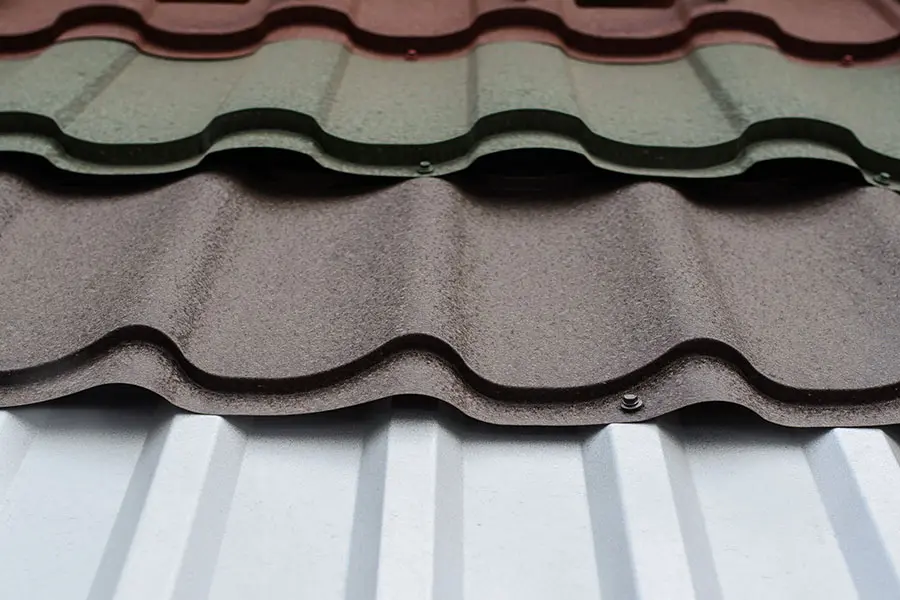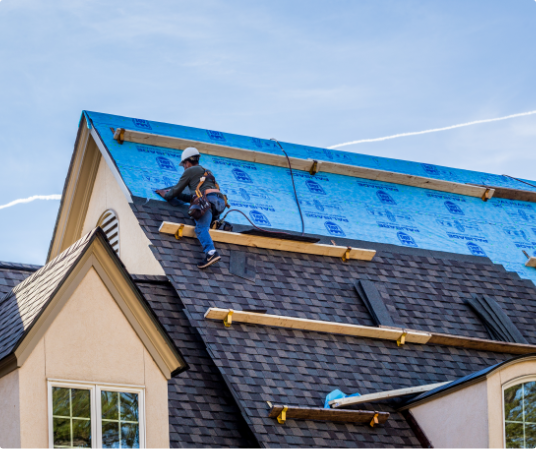A Comprehensive Consider Roofing Companies Gainesville Citizens Recommend
A Comprehensive Consider Roofing Companies Gainesville Citizens Recommend
Blog Article
Best Practices for Ensuring Correct Roof Air Flow
A well balanced consumption and exhaust vent ratio, frequently 1:300, plays a pivotal function, with consumption vents ideally placed at the lower edge of the roofing system for awesome air entrance and exhaust vents at the optimal for cozy air exit. Maintaining insulation away from vents is essential to protect against air flow limitation.
Understand Air Flow Essentials
Correctly understanding air flow essentials is crucial for ensuring the longevity and effectiveness of roofing systems. Efficient ventilation reduces dampness accumulation and temperature extremes in the attic room, both of which can cause substantial structural damages gradually. A well-ventilated roof covering aids in protecting against common concerns such as mold growth, timber rot, and ice dams, which can jeopardize the stability of the roofing materials and the underlying frameworks.
The main objective of ventilation is to help with the movement of air, enabling a regular exchange in between the outside and indoor environments. This equilibrium is achieved via a combination of intake and exhaust vents that function together to maintain optimal airflow. Consumption vents, generally located along the eaves or soffits, permit fresh air to get in the attic area, while exhaust vents, often situated at or near the roof covering ridge, allow hot, humid air to run away.
Trick variables influencing the efficiency of roofing system air flow include correct positioning, ample sizing, and making sure that both intake and exhaust vents are unhampered. Normal examination and upkeep are crucial to recognize possible obstructions, damages, or inadequacies in the air flow system, consequently protecting the roofing system's efficiency and resilience.
Kinds of Roofing System Vents
Roofing system vents play a vital function in preserving reliable attic room ventilation and, by expansion, the total wellness of the roof system. Various kinds of roofing vents are readily available, each with special benefits tailored to specific roof covering requirements.

Soffit vents are installed under the eaves and work in tandem with roofing system vents to guarantee a balanced intake and exhaust system. By allowing cooler air to enter from below, soffit vents facilitate the expulsion of hot air with upper vents. Gable vents, situated on the outside walls of the attic, offer another reliable solution, specifically in homes with saddleback roofs.
Analyze Your Current Ventilation

Following, take into consideration the age and condition of your roof covering materials and air flow elements. Older systems may not abide by current building codes or may have weakened with time, decreasing their performance. Conduct a comprehensive assessment to identify any kind of signs of damage, such as corrosion, damages, or spaces that might compromise the system's performance.
In addition, determine the attic room temperature and humidity levels. High temperature levels and moisture can indicate inadequate air flow.
Setup Best Practices
Reliable setup of roofing air flow systems is vital for guaranteeing optimal efficiency and durability. Appropriate setup begins with comprehending the specific ventilation requirements of the structure and the roof covering it covers. This includes calculating the proper proportion of consumption to wear down vents, usually sticking to the 1:300 regulation, which specifies one square foot of ventilation for every single 300 square feet of attic flooring space.

The positioning of vents is equally critical. Intake vents need to be installed at the roof covering's lower side, usually in the soffits, to permit awesome air to go into. Exhaust vents, on the various other hand, need to be installed near or at the roofing system's height to help with the departure of warm, damp air. This produces an all-natural air movement that helps keep temperature level and dampness balance within the attic area.
Seal all vent connections carefully to avoid air leaks and prospective water infiltration. Usage high-quality products and comply with supplier standards to make sure sturdiness and efficiency. In addition, integrating ridge vents with baffles can dramatically improve air movement effectiveness by stopping wind-driven rain and snow from entering the attic room.
Inevitably, accurate installment of roof covering air flow systems mitigates possible issues such as mold growth, ice dams, and architectural see here damages, making sure the roofing system's integrity and the structure's overall wellness.
Routine Upkeep Tips
Uniformity in maintenance methods is basic to making sure the long-term efficiency of roof covering ventilation systems. During these evaluations, make sure that vents are complimentary of particles, nests, and other blockages that could hamper air movement.
Cleaning up the vents is one more crucial job. Use a soft brush or a vacuum cleaner to get rid of pop over to this web-site dust and particles from intake and exhaust vents. Beware not to harm the vent displays or louvers during the procedure. Furthermore, examine the attic room room for any indicators of water damages, which might endanger the honesty of the roof.
Correct insulation is just as important. Make sure that attic insulation does not obstruct the vents, as this can severely limit air flow. If any type of insulation has shifted or resolved, reposition or change it to keep an effective barrier.
Finally, change any kind of harmed or missing out on components without delay. Broken vents, broken shingles, or tatty blinking can all add to insufficient air flow and must be dealt with right away. Normal maintenance guarantees that the roof covering air flow system works optimally, thereby extending the life expectancy of the roof covering itself.
Final Thought
Guaranteeing correct roof covering ventilation is critical for preserving the efficiency and sturdiness of a roofing system. Adherence to the 1:300 consumption and exhaust air vent ratio, coupled with the tactical placement of vents, is important. Normal semiannual assessments, debris cleaning, and making certain insulation does not obstruct air flow are essential techniques. Implementing these ideal techniques will foster a well-ventilated roof, thereby alleviating possible concerns related to moisture accumulation and extreme warm, inevitably prolonging the roofing's lifespan.
A well balanced consumption and exhaust vent proportion, commonly 1:300, plays a critical role, with consumption vents ideally placed at the lower edge of the roof covering for trendy air entrance and exhaust vents at the height for warm air leave. Intake vents, typically located along the soffits or eaves, permit fresh air to enter the attic room area, while exhaust vents, typically located at or near the roofing system ridge, allow hot, moist air to leave.
Soffit vents are installed under the eaves and job in tandem with roofing system vents to try this guarantee a balanced intake and exhaust system. By allowing cooler air to enter from below, soffit vents facilitate the expulsion of hot air with upper vents. Adherence to the 1:300 consumption and exhaust air vent ratio, coupled with the tactical positioning of vents, is necessary.
Report this page